Cardiovascular Center
-
Cerebrovascular Center

Bucheon Sejong Hospital is the only hospital designated by the Ministry of Health
and Welfare of Korea as a cardiac specialist hospital.
Key History of Cardiovascular Center
- 2023.10 Heart Safe App developed by Sejong Hospital
- 2023.08 Bucheon Sejong Hospital implanted a VAD and a subsequent heart transplant to a Fontan patient for the first time in Korea
- 2023.07 Seleted as a hospital to operate Transcatheter Aortic Valve Implantation (TAVI) for 9 years in a row (01.07.2023-30.06.2024) (Ministry of Health and Welfare)
- 2023.06 Bucheon Sejong Hospital implements a minimally invasive, single-incision approach for mitral valve surgery
- 2023.05 Sejong Hospital Group introduced Kore's first auto-heart failure diagnostic AI program
- 2023.05 Hold the 1st Congenital Heart Disease Symposium
- 2023.01 Sejong Hospital achieved a milestone of 1,600 heart surgeries for children overseas
- 2022.02 As a tertiary hospital, it implemented an E-vita OPEN NEO (Artivion Inc.), a new medical technique in aorta surgery area for the first time
- 2022.02 Success of artificial heart surgery to the youngest patient in Korea
- 2022.02 The Pediatric Cardiac Team succedded the first non-surgical, percutaneous insertion of two heart valves surgery in Korea
- 2022.10 Sejong Hospital and Vuno co-developed and introduced a within 24 hours cardioplegy risk detection system
- 2022.11 Receive a Minister Prize from Ministry of Health and Welfare, recognizing contributions to the Healthcare Accreditation System
- 2021.10 Establish an emergency aorta surgery hotline and reorganize the rapid treatment system
- 2021.11 Successful insertion of a left ventricular assist device for the purpose of replacing heart transplantation
- 2020.06 Succeeded in "aortic valve and ascending aortic replacement" for the first time in Korea (with incision of the right chest only)
- 2019.10 Obtained Korea's first Clinical Care Program Certification (CCPC) for heart disease (JCI, 2019.10.30-2022.10.31)
- 2019.09 Succeeded left ventricular assist device insertion for the first time as a general hospital
- 2019.09 Succeeded aortic valve implantation using 3D endoscope for the first time in Korea
- 2019.08 Earned Grade 1 in the adequacy evaluation of coronary artery bypass graft for 11 consecutive years (Health Insurance Review and Assessment Service)
- 2018.03 Success in the longest distance (600km) heart transplantation in a Korean first
- 2017.12 Success in 1st grade coronary artery bypass surgery on 3 consecutive occasions in a Korean first
- 2017.11 Acquired JCI International Certification on 3 consecutive occasions, which was a first for a heart hospital
- 2017.09 Successfully completed 3D Stereoscopic Endoscopic Surgery in a Korean first
- 2017.02 Introduced DaVinci Si, the world's most advanced surgical robot in a world first.
- 2016 ~ present Obtained Grade 1 in the 5th adequacy evaluation of chronic obstructive pulmonary disease (COPD) for the fifth year (Health Insurance Review and Assessment Service)
- 2015 ~ present Selected as an institution to conduct transcatheter aortic valve implantation (TAVI) for 6 consecutive years (Ministry of Health and Welfare)
- 2015.06 Performed integrated cardiac care in a Korean first.
- 2015.05 Performed coronary artery bypass surgery on a 91 year 9 month old patient – the oldest such recipient in Korea.
- 2015.06 Selected as TAVI (percutaneous aortic valve implantation) institute
- 2014.05 Successfully performed percutaneous aortic valve surgery after the first reconstruction of an aortic valve in Korea
- 2013.11 Introduced the 'Allura Clarity' cardiovascular imaging device to Asia for the first time
- 2011 ~ present Acquired Grade 1 in the adequacy evaluation of coronary artery bypass graft for 12 consecutive years
- 2010.05 Performed 50,000 cardiovascular surgeries in the shortest time in a private hospital in a Korean first
- 2010 ~ 2012 The hospital that overseas patients selected the most in treating heart disease
- 2009 ~ present Earned Grade 1 in the adequacy evaluation of coronary artery bypass graft for 11 consecutive years (Health Insurance Review and Assessment Service)
- 2005 ~ 2008 Selected as a pilot hospital for heart disease (Ministry of Health and Welfare)
- 2005 Top 3 Hospital with low acute myocardial infarction mortality (Health Insurance Review and Assessment Service)
- 2001 ~ 2004 The hospital with the highest success rate in Cardiopulmonary surgery in Korea (Korea Heart Foundation)
- 1994.04 The first private hospital in Korea to successfully perform a heart transplant operation
- 1994.04 Successfully performed a heart transplantation with the aid of a helicopter
- 1989 Designated as special medical institution for heart disease (Ministry of Health and Welfare)
If you go to a cardiovascular center, you will receive treatment as follows
Establish Treatment Policy
Treatment
Patient & Medical staff integrate treatment when discussion about treatment method is needed
Heart integratedtreatment
Cardiac Test : CT, Exercise Test, Echocardiography
Available within 1 hour 30 minutes to 3 hours on the day of arrival
- High-tech CT
-
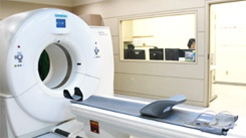
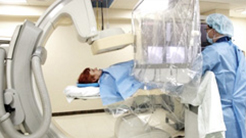
- With the world's first two X-ray and two multi-meter simultaneous use, the image can be taken more than twice as fast
- It is possible to check microscopic defenses such as metallic materials and calcification in blood vessels
- Safe and accurate screening with minimum radiation exposure and 99% accuracy
- Cardiovascular Imaging Device (Allura Clarity FD1010)
-
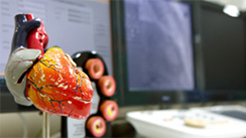
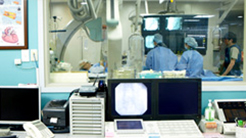
- Diagnosis of cardiovascular abnormalities
- Vascular treatment
- Minimal risk of radiation exposure and complications
- High-quality image enables quick diagnosis
- Clean Aseptic Operating Room
-
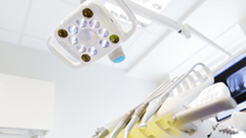
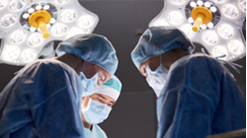
- International standard optimization
- Minimizing myocardial damage in the heart
- Hybrid Operating Room
-
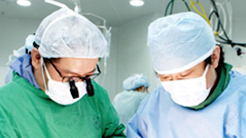
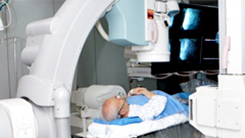
- Diagnosis, interventional surgery and simultaneous heart disease operations are possible
- Consisting of 3 recording rooms (adult cardiac chamber, arrhythmia chamber, pediatric cardiac chamber), recovery room and control room
심장혈관센터 조직
Adult heart
Bucheon Sejong Hospital is the best cardiology hospital in Korea. It is recognized as ‘the best, the first, and the only’ and has been leading the treatment of heart disease based on the best medicine and most experienced medical staff.
Bucheon Sejong Hospital plays a leading role in the cardiovascular field in Korea and treats a wide range of cardiovascular diseases including hypertension, arteriosclerosis and ischemic heart disease (angina pectoris, myocardial infarction), arrhythmia, valve disease and congenital heart disease.We provide the latest treatment including diagnostic and non-surgical interventional procedures using cardiac ultrasound, nuclear medicine test, cardiovascular examination, etc., and cooperate with thoracic surgeons in cases requiring heart surgery.
성인심장 - 성인흉부외과
Since the first open heart surgery in 1983, it has been called the history of Korean heart surgery itself.
Since reaching 1,000 cases in 1986, the third year since open heart surgeries in this land began, which has been regarded as the wastage of heart surgery, we have performed about 30,000 open heart surgeries and have been playing the role of the "leading department of thoracic surgery in Korea." Based on our experience of approximately 10,000 cases of open heart surgery to 1994, we succeeded in performing the first heart transplant surgery in a private hospital. This result was the culmination of know-how available only at Bucheon Sejong Hospital, and forms the basis of our ability to lead the way into the 21st century.The thoracic surgery department of Bucheon Sejong Hospital is even more well known abroad than domestically due to its dedicated medical treatment and research results. Since the early 2000s, more than 100 international journals have been published, and visits and field trips by foreign cardiac surgeons have been carried out. By conducting surgery on patients in their home country with knowledge and skills learned in Korea, the brand value of "Bucheon Sejong Hospital Thoracic Surgery" is becoming a virtuous cycle leading to globalization and standardization.
Pediatric heart
Through the heart pathology meeting (Pediatrics, Thoracic Surgery, Anesthesiology, Radiology, Cardiopathology) that started in 1985, we have made breakthroughs in understanding and treating congenital heart disease in Korea by studying heart formation and autopsy heart research.
I the same year, we succeeded in performing balloon valve surgery for pulmonary artery stenosis patients for the second time in Korea. In 1987, electrical physiology using hard esophageal electrode ceramics led to great development in the diagnosis and treatment of pediatric arrhythmia. In 1989, patients were treated with severe interventions such as pulmonary artery obstructions in the case of newborns, percutaneous closures of arterial intubation in 1991, and percutaneous closures of atrial septal defects in 1994.In 2005, we introduced heart ultrasounds for the second time in Korea, so that the treatment of atrial septal defects were performed without general anesthesia, but with more precision, thereby improving the quality of Korean pediatric cardiac intervention. Currently, seven pediatric cardiologists are in charge of medical care in the department, and outpatient care is centered on pediatric heart disease, but may also treat general diseases. Pediatric echocardiography tests are performed at the rate of about 6,000 cases a year, and fetal echocardiography is performed likewise.
Pediatric heart
It is one of the few surgical teams that specialize in congenital heart malformations in Korea, showing the number of surgeries and grades as much as Seoul National University Hospital, Ulsan University Hospital, and Asan Medical Center.
In particular, we have been working with obstetrics and gynecology and pediatric adolescents to concentrate on the treatment of patients with complex neonatal congenital malfunction. The application of a mechanical circulatory assist device in pediatric patients, preservation of right ventricular function after Tetralogy of Fallot, and pulmonary valve regurgitation are fulfilling with satisfactory treatment results. We have also tried to perform all possible open-heart surgeries without blood transfusion, and have published more than 10 papers in SCI and SCIE-listed cardiovascular journals in the two years from 2010 to 2012, with active academic work such as research paper publications, conference presentations based on clinical experience and surgical results. In early 2012, JACC, a world-renowned cardiac journal, published a paper on the appropriate introduction of pulmonary valve replacement after surgery for Tetralogy of Fallot surgery. As such, Bucheon Sejong Hospital's pediatric adolescent department plays a leading role in the development of the pediatric heart field.


